Welcome. We set a clear promise: practical clarity, modern context, and warm guidance for your path. This intro will help you feel confident with your first pull.
At a glance, tarot cards offer structured depth with a standard 78-card system and classic suits. That structure supports layered readings and study over time.
By contrast, oracle cards are flexible. Deck sizes vary, themes are rich, and many cards include keywords for quick insight.
In 2025, diverse art, inclusive themes, and digital-friendly decks make practice easy on phones and apps. We’ll show how to match a deck to a moment—decision work, self-care, or creative blocks.
Think of this guide as a friendly compass. We invite your intuition and offer simple language for spreads, suits, structure, and themes. Ready to explore with us?
Why people search this in 2025: choosing the right deck for guidance, intuition, and growth
Many people today hunt for a deck that fits their rhythm—fast check-ins or deep pattern work.
We want reliable guidance that fits busy life. A quick pull can offer simple inspiration for a single question. A fuller reading helps you see patterns across time.
No dogma needed. Both major deck types rose in popularity during the 19th century, and now they meet modern needs with inclusive art and portable formats.
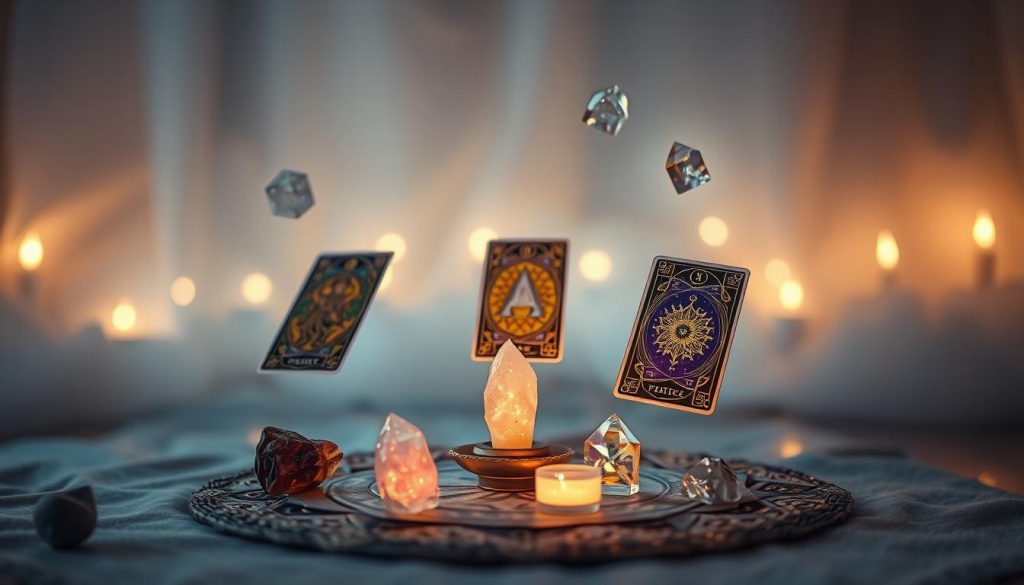
Think about style. Do you prefer direct phrases or rich symbolism? That choice shapes how you use cards for reflection, decision-making, and emotional language.
Practical tips: pick a deck with imagery that resonates. Try a single-card daily pull or a three-card spread for a clearer view. Keep questions simple and steady.
Bottom line: the best deck is the one that helps you feel seen, supported, and ready for gentle personal growth.
What are tarot cards? Structure, suits, spreads, and how readings work
Think of a tarot deck as a compact library: 78 cards that tell both big-picture lessons and daily moments. Structure is simple—22 Major Arcana for archetypal shifts (numbered 0–21) and 56 Minor Arcana for everyday life.
The Minor Arcana splits into four suits: Wands (creativity), Cups (emotion), Swords (mind), and Pentacles (resources). Each suit runs Ace through Ten, plus Page, Knight, Queen, and King. That number flow helps you track themes and roles.
Common spreads include a three-card pull for quick guidance and the Celtic Cross for deeper study. Position and orientation change a card’s meaning, so context matters as much as symbol.
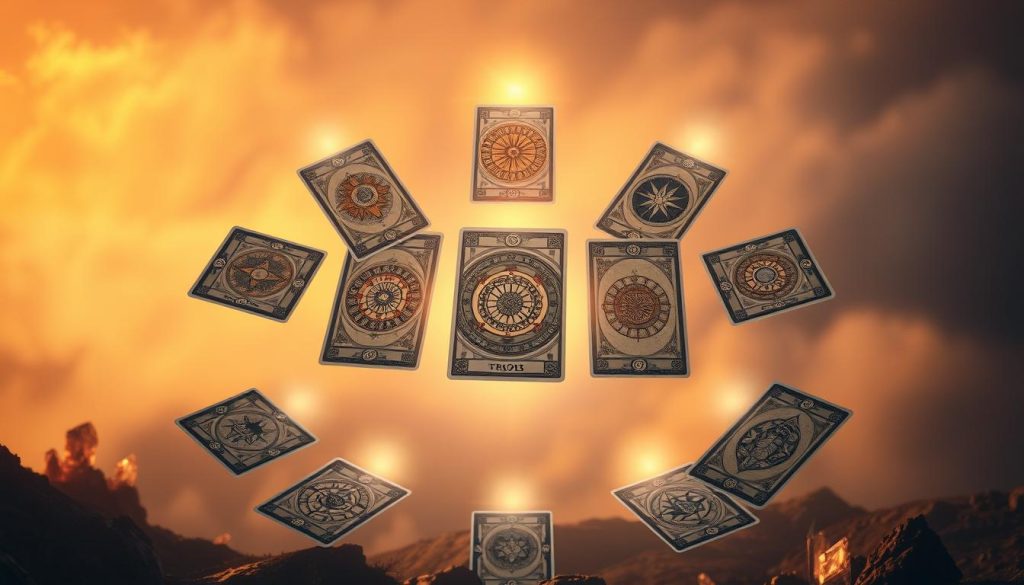
Origin stories stretch from 15th-century Italy as a game to 19th-century use for divination. Readings blend symbolism with intuition to offer practical insight and guidance you can act on now.
Start small. Pull one card daily, journal repeats, and watch how patterns map to real life. Over time, this structure makes many decks portable and your practice more confident.
What are oracle cards? Flexible themes, card counts, and beginner-friendly guidance
Imagine a set built around a single theme—angels one month, animals the next—and you’ve met the spirit of oracle decks.
Oracle cards are creator-led systems with wide card counts. Many decks hover between 36 and 64 number cards, though some sets go smaller or much larger. There is no fixed suit structure, so each creator shapes meaning and flow.
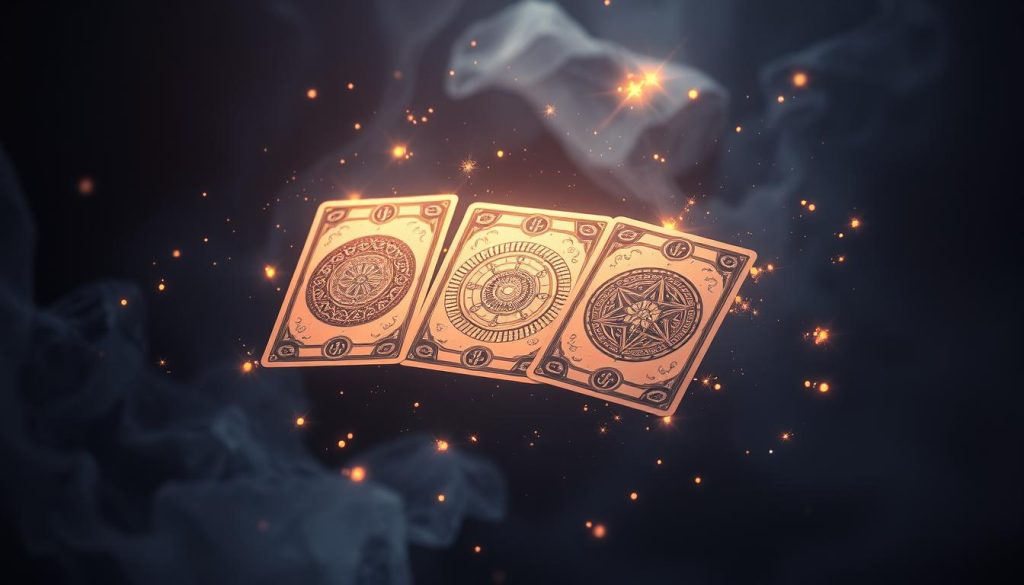
Design choices often include a keyword or short phrase right on the card. That makes a quick reading easy. Beginners love one-card pulls, simple spreads, and an affirmation or prompt to carry through the day.
Historically, these decks have roots in 19th-century France with readers like Madame Lenormand. Today the variety is joyful: chakra, self-love, animal, angel themes all help match a deck to your focus. Pick art that calms you, trust your first feeling, and use a card as gentle guidance whenever you need a clear nudge.
Tarot vs. Oracle Cards: What’s the Difference in 2025?
One system keeps a steady map of archetypes; the other hands you a themed prompt designed for quick action.
Structure matters. A fixed deck offers 78 cards with Major Arcana and Minor Arcana and four clear suits. That framework supports layered readings and timelines.
By contrast, themed decks change size and focus. Many oracle decks print a keyword or phrase on each card for instant guidance. This makes daily pulls fast and friendly.
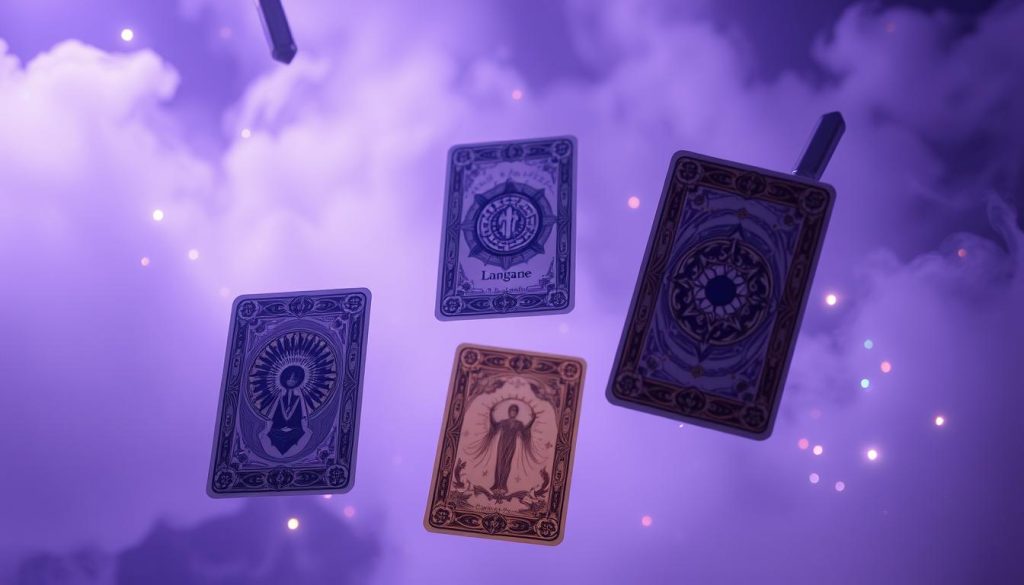
Learning curves differ. Study plus intuition help with deep spreads like the Celtic Cross. Other decks aim for clear guidance in a single pull.
Use cases matter too. Complex life choices and shadow work often lean toward structure and archetype. Quick focus, encouragement, and creative prompts suit free-form themes.
Both support growth. One dives deep; the other lifts and clarifies. Try a mixed practice and feel which kind of meaning lands best in your body.
When to use tarot, when to use oracle: readings, personal growth, and divination
Choose a tool by the question you have: deep pattern work asks for structure, while a quick check-in wants a clear prompt.
Tarot shines for layered questions, big choices, and timelines. Use a three-card spread for past–present–future or a full spread like the Celtic Cross when you want to trace causes and outcomes. The Minor Arcana helps ground daily themes, and a careful reading maps meaning over time.
Oracle sings for quick clarity and emotional regulation. Pull a single card for a daily anchor or an affirmation when you need steadiness. These decks often give direct guidance that calms and centers without heavy study.
Try this pairing: start your morning with a single oracle card for tone-setting. Later, bring out a structured spread for any question that needs unpacking. Notice how each message lands in your head and heart; alignment is your cue to act.
Practice compassion: switch tools as life shifts. Use oracle for overwhelm and tarot for investigation. The best reading is one kind step forward.
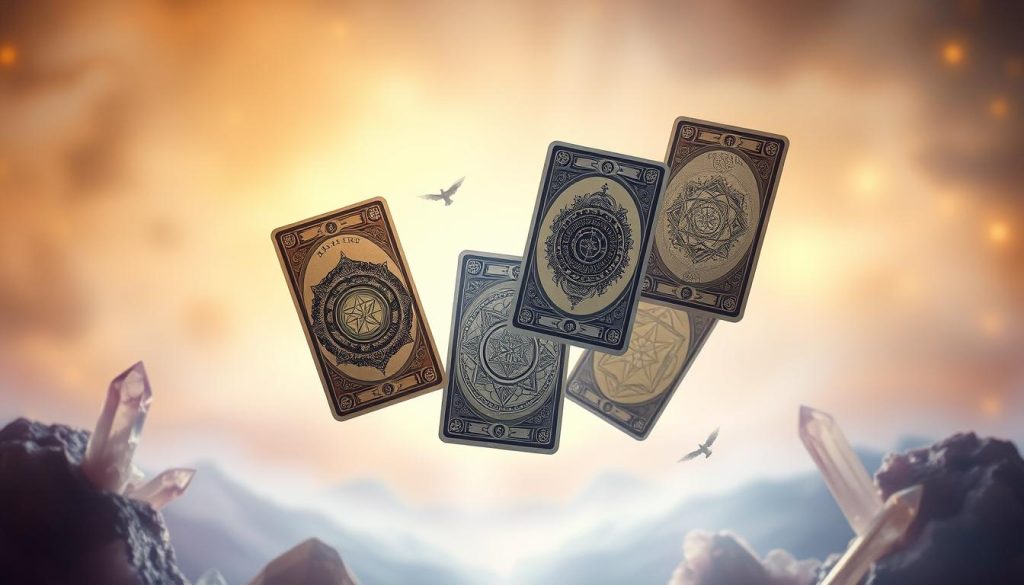
Can you use tarot and oracle together? Smart ways to blend decks
Yes — you can blend systems, and it often feels like a clear conversation between two friends. One deck maps detail, while an oracle set offers a headline of comfort or action.
Try this easy flow: open with an oracle card to set tone. Then lay a tarot spread to explore specifics. Close with an oracle message that turns insight into a single, usable takeaway.
Here’s a simple mixed spread to try now: Tarot — Problem, Root Cause, Next Step. Oracle — Spiritual Advice, Affirmation. When a tarot position feels fuzzy, draw one oracle card for emotional context or quick guidance.
Match tones for smoother readings. Pick decks with complementary art and energy. Be playful: pair seasonal sets, moon-phase decks, or a focused oracle decks with a classic tarot decks for balance.
Practical tip: journal what each deck contributed after a reading. Over time you’ll learn which pairings give the clearest intuition and inspiration for daily life.
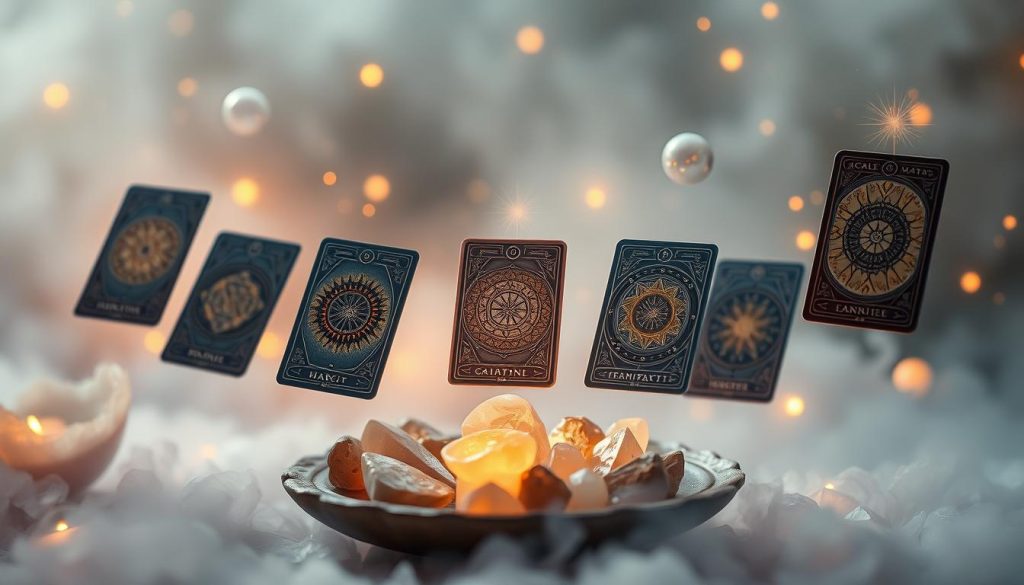
How to choose the right tarot deck or oracle deck in 2025
Choose a deck that feels like a friend—one whose art and tone meet you where you are.
Trust your first body reaction. Scan cover art and sample cards. Notice which images make you open up or sit back. That initial pull is pure intuition and a great first filter.
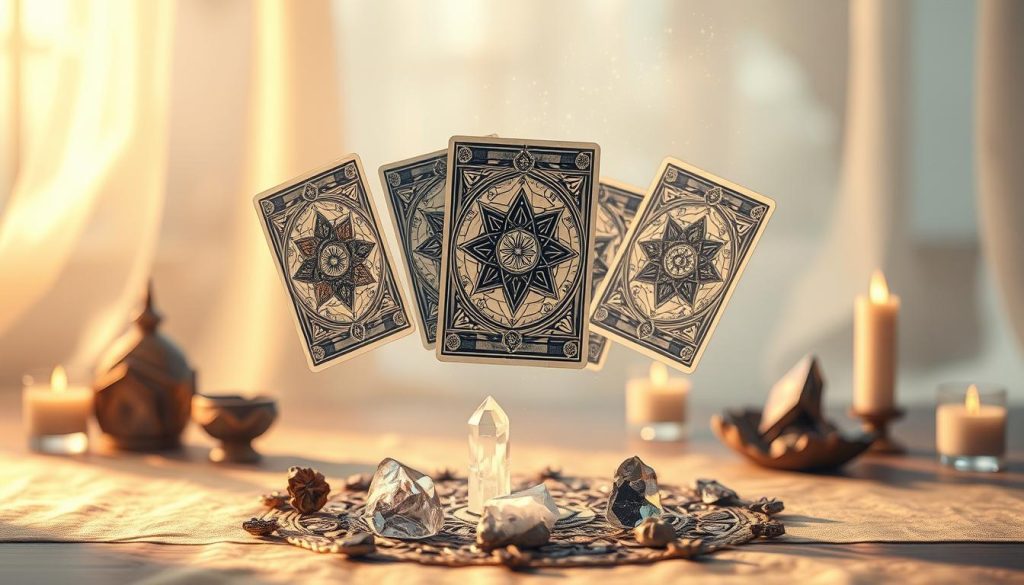
Decide whether you want layered symbolism or direct messages. If study and structure please you, a tarot deck with classic imagery will reward steady practice. If you need quick affirmation and a theme, pick an oracle deck that fits your focus.
Practical checks matter. Hold a deck to test size, cardstock, and readability. Watch online flip-throughs to preview spreads and sample meanings before you buy.
Starter picks help beginners: try Rider‑Waite‑Smith for tarot study momentum. For daily tone-setting, a theme-based oracle decks with clear affirmations is friendly and fast.
Remember: alignment with your goals beats popularity. Own a few decks if you like—different sets shine for different questions and stages of growth.
Your next step: trust your intuition and start reading today
Start your practice with a single breath and a single draw. We invite you to pull one card now — tarot cards or oracle cards — and let the first message be your compass.
Breathe, ask a kind question, draw, and write one sentence of insight. Use a short ritual. Keep it simple and kind.
Try one daily card for inspiration and one weekly reading for broader guidance. Small, steady practice builds trust and growth.
Choose the tool that feels supportive today. You already have what you need; a deck only helps you hear it more clearly.
Start now, and let readings become a gentle sanctuary for clarity, care, and personal growth.
Ready to pull cards now? Jump to the Tarot hub: https://mysticbolt.com/category/tarot/ . For fast, playful practice, open Mystical Fun & Free Apps: https://mysticbolt.com/category/mystical-fun-free-apps/ . If you want deeper results, use Manifestation & Visualization with your spreads: https://mysticbolt.com/category/manifestation-visualization/ . See repeating numbers? Check Numerology & Angel Numbers: https://mysticbolt.com/category/numerology-angel-numbers/ . Prefer more advanced tools? Explore Member Apps: https://mysticbolt.com/category/member-apps/ .
